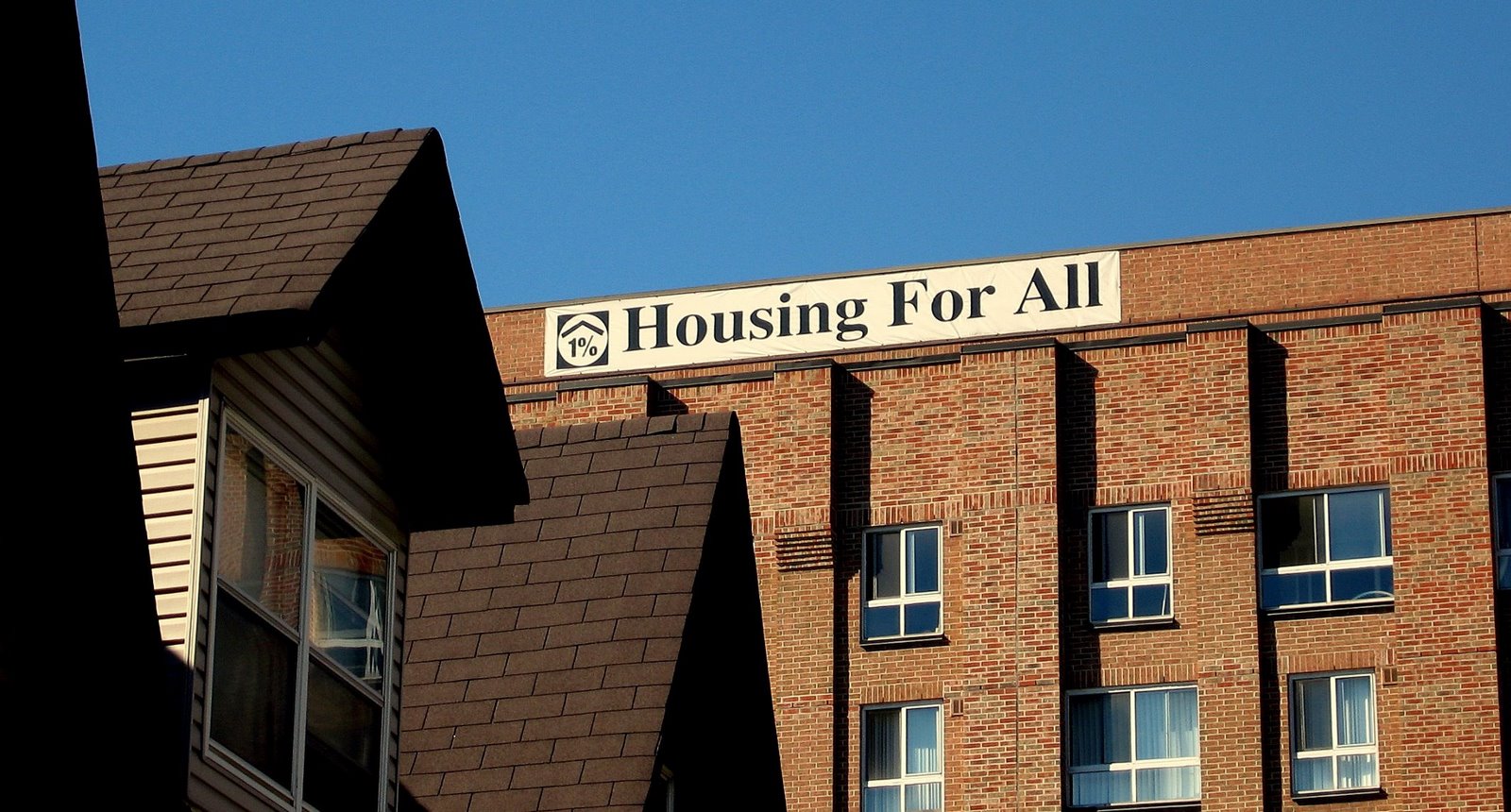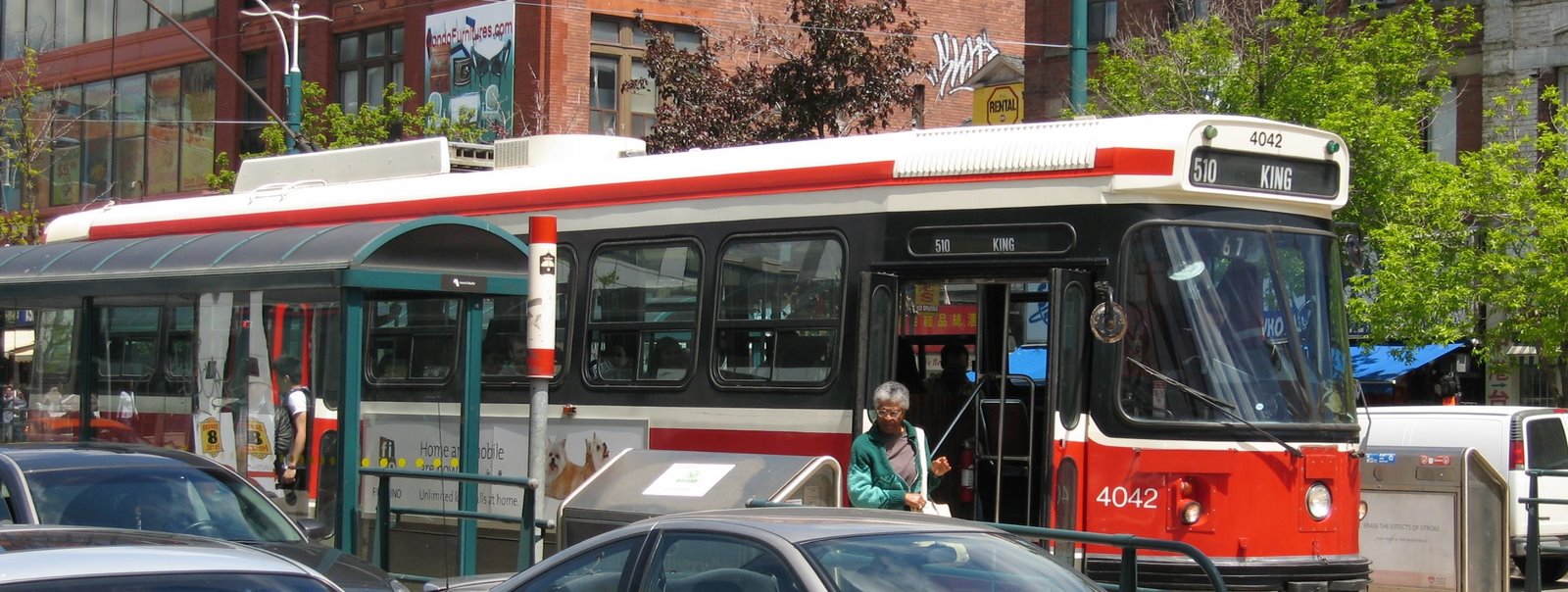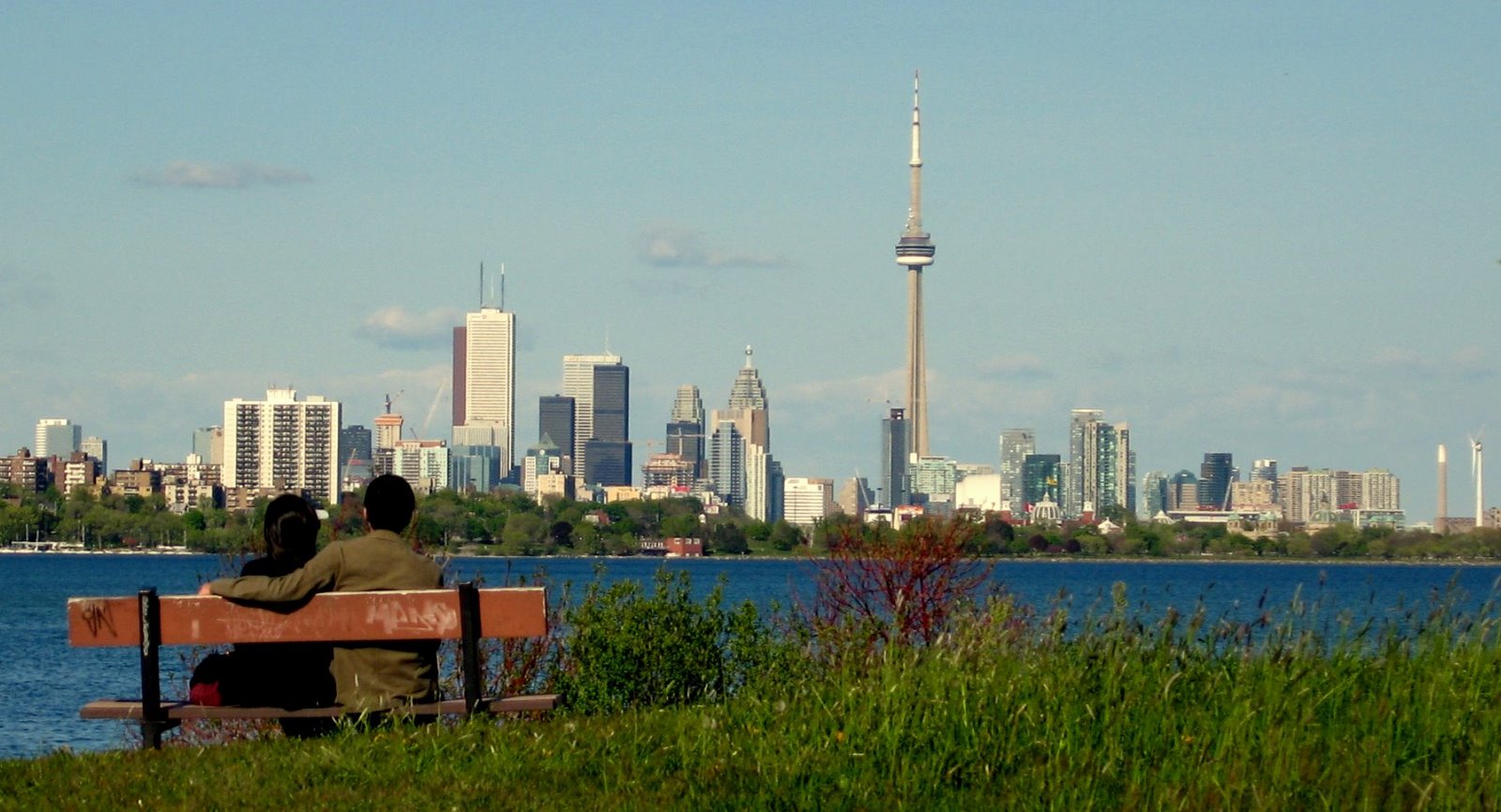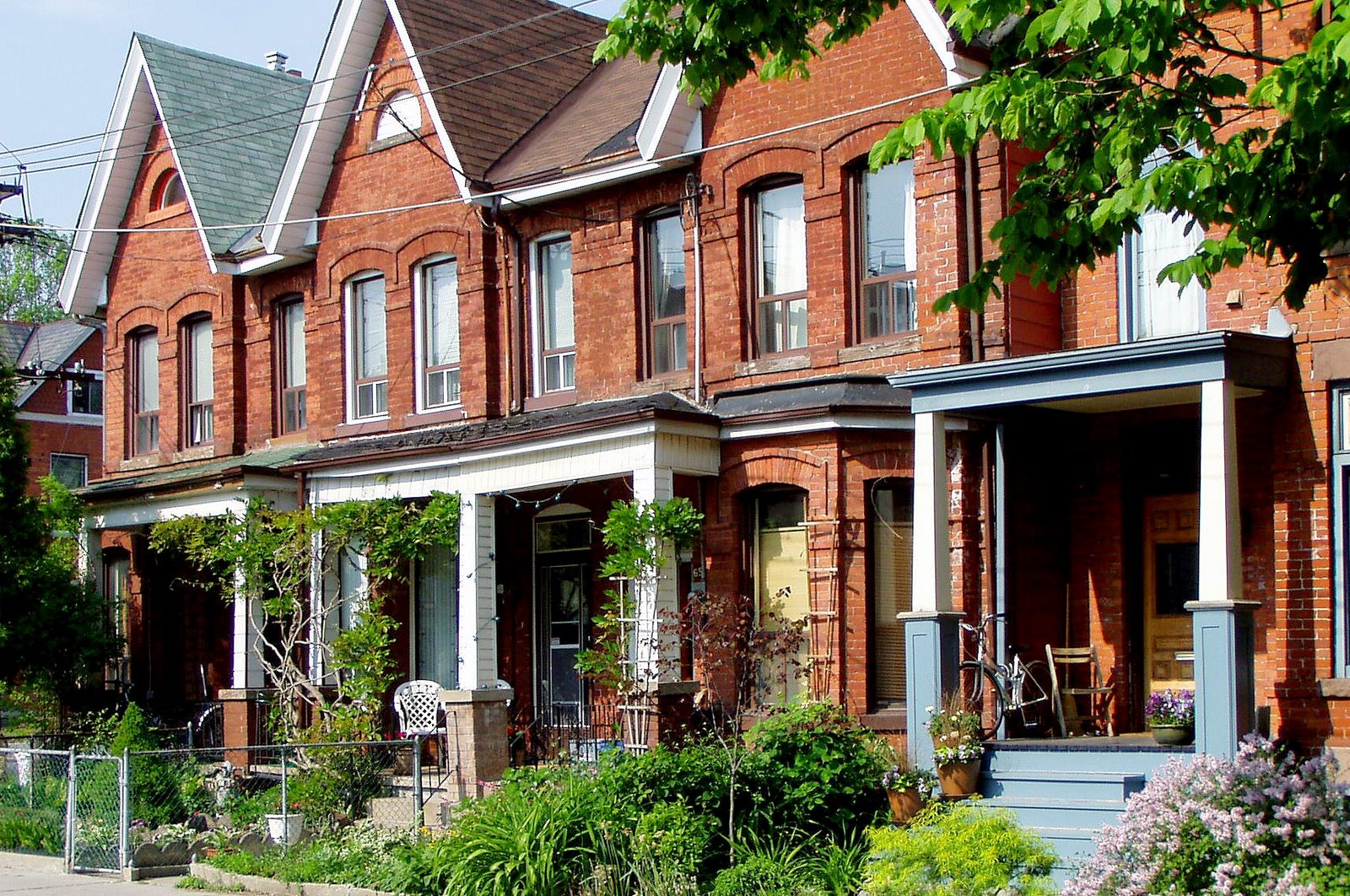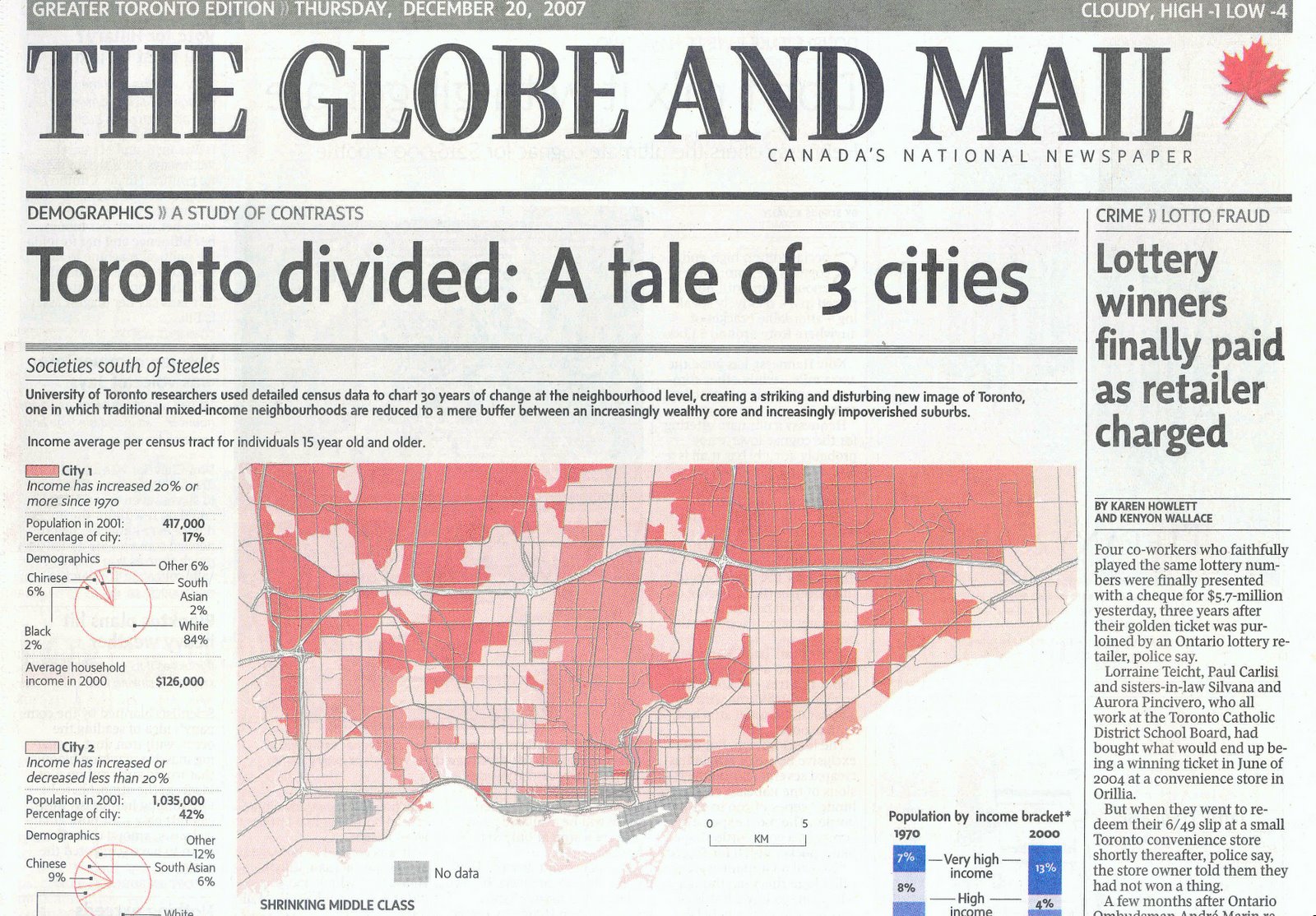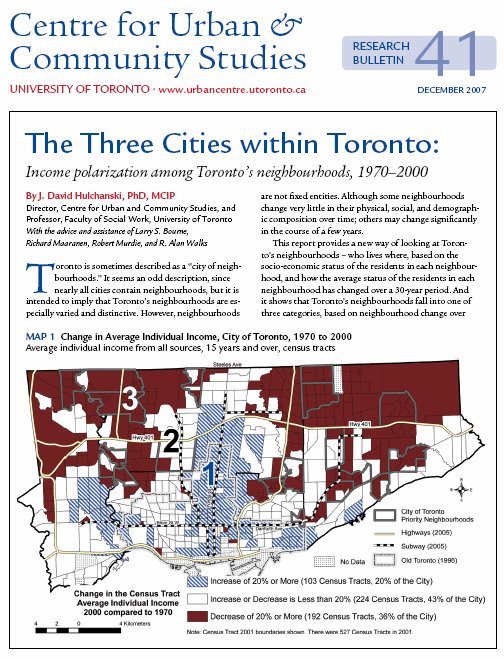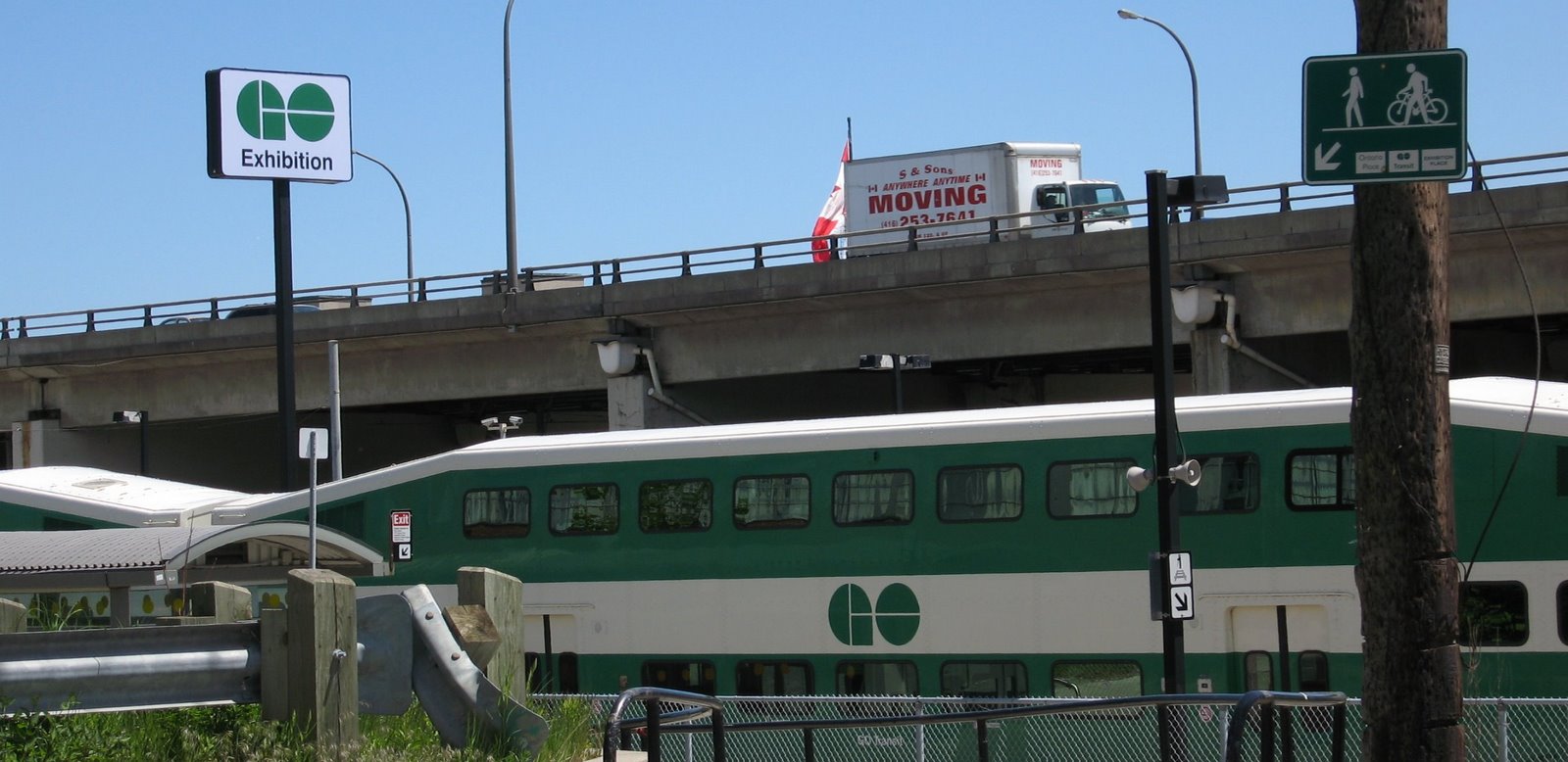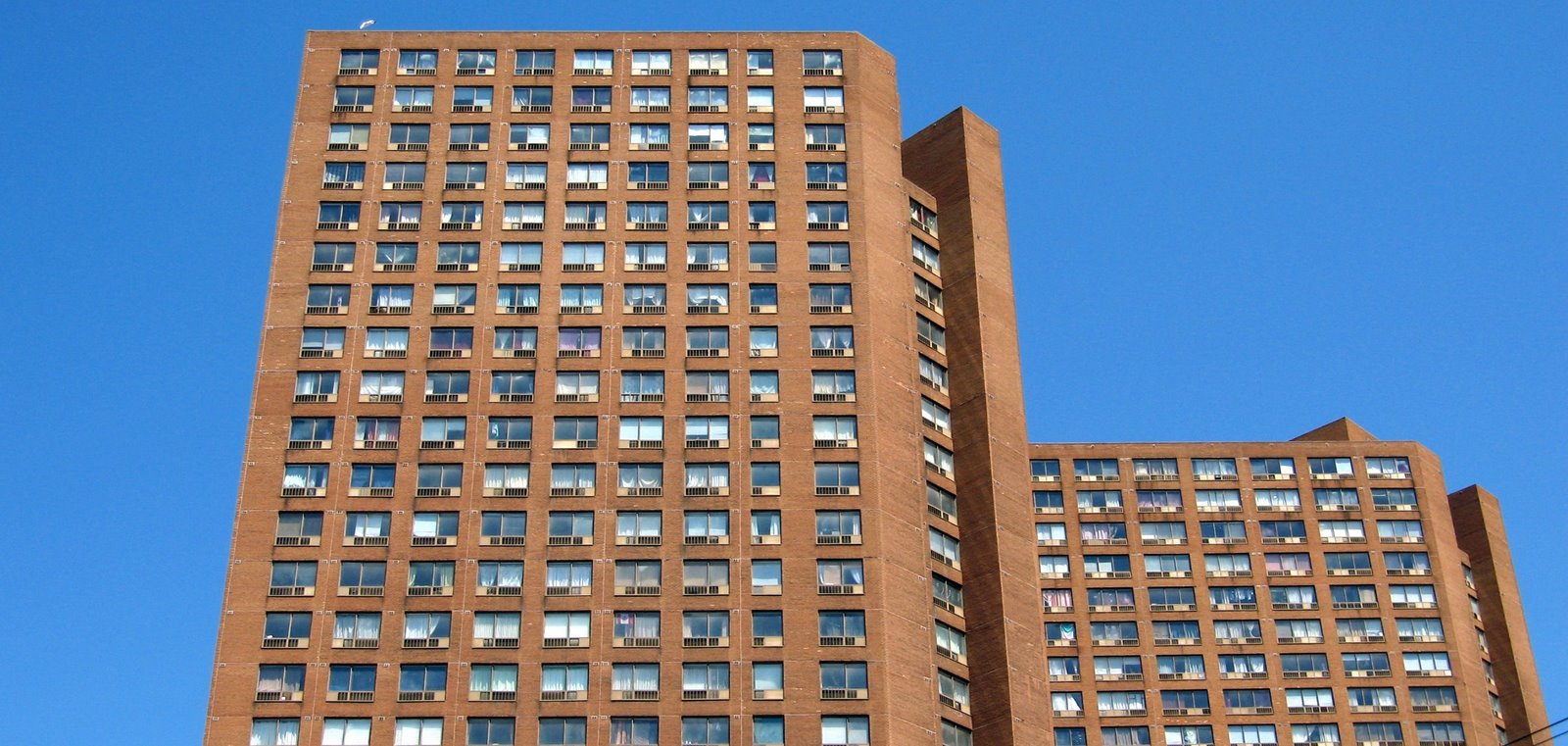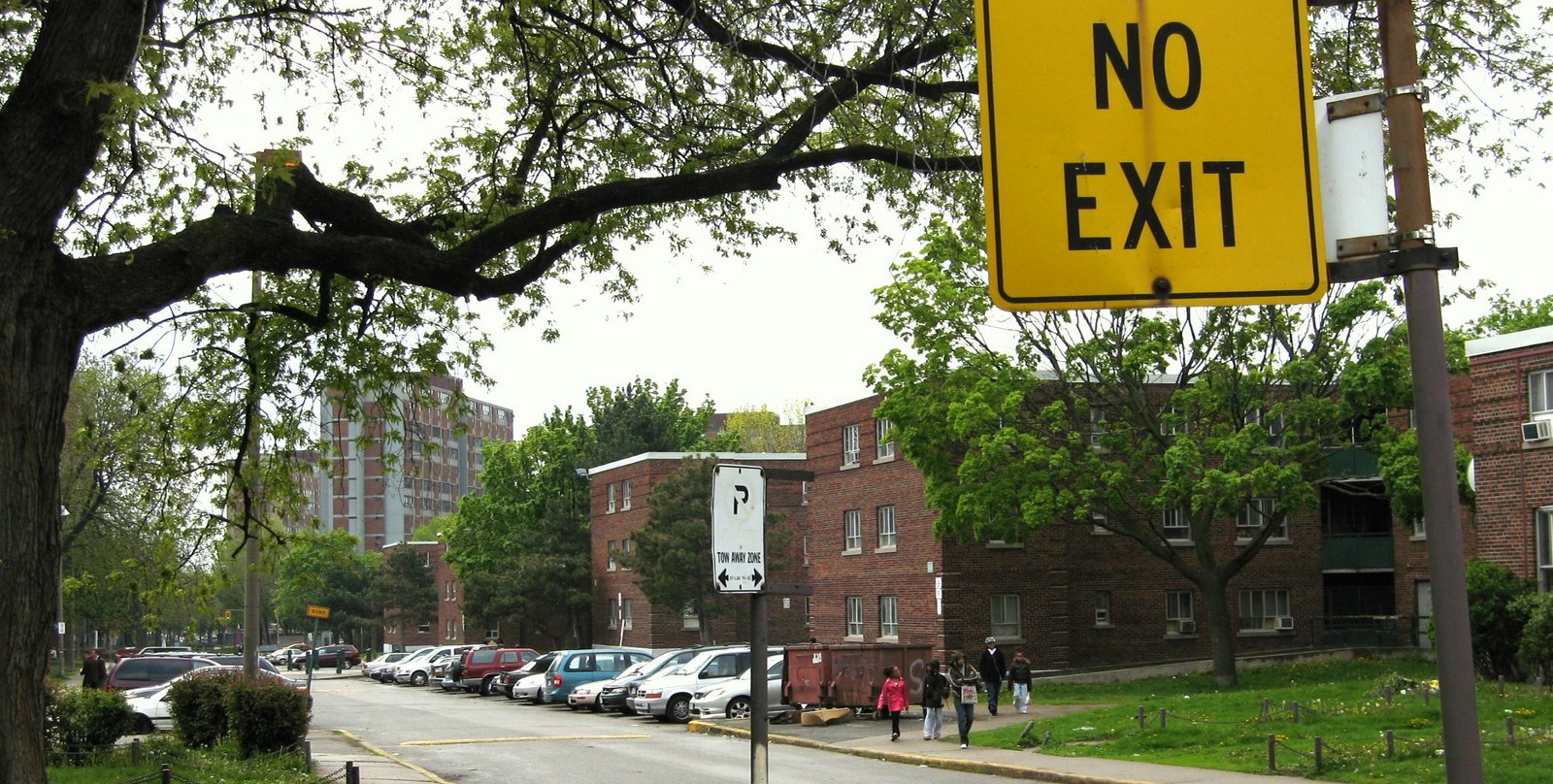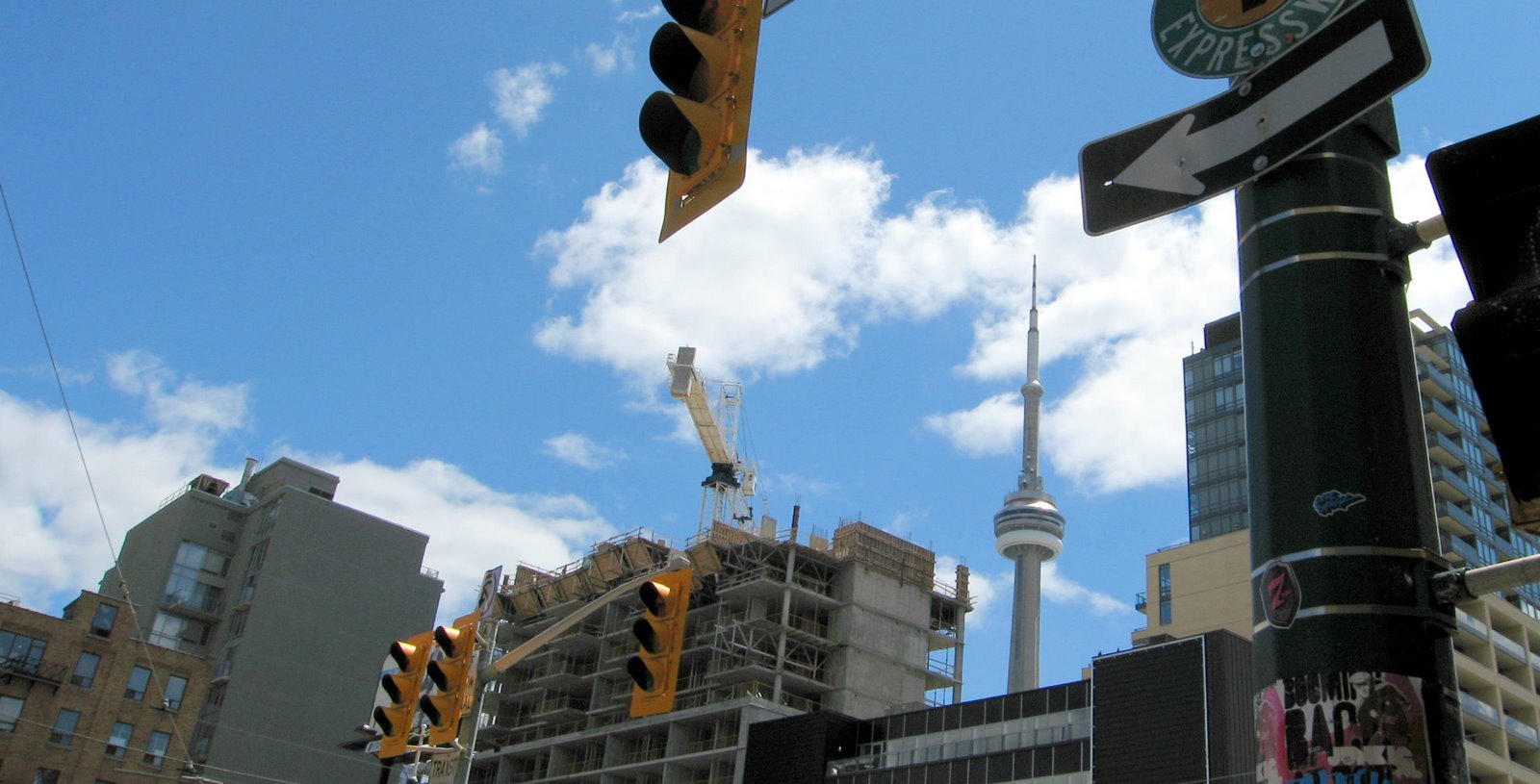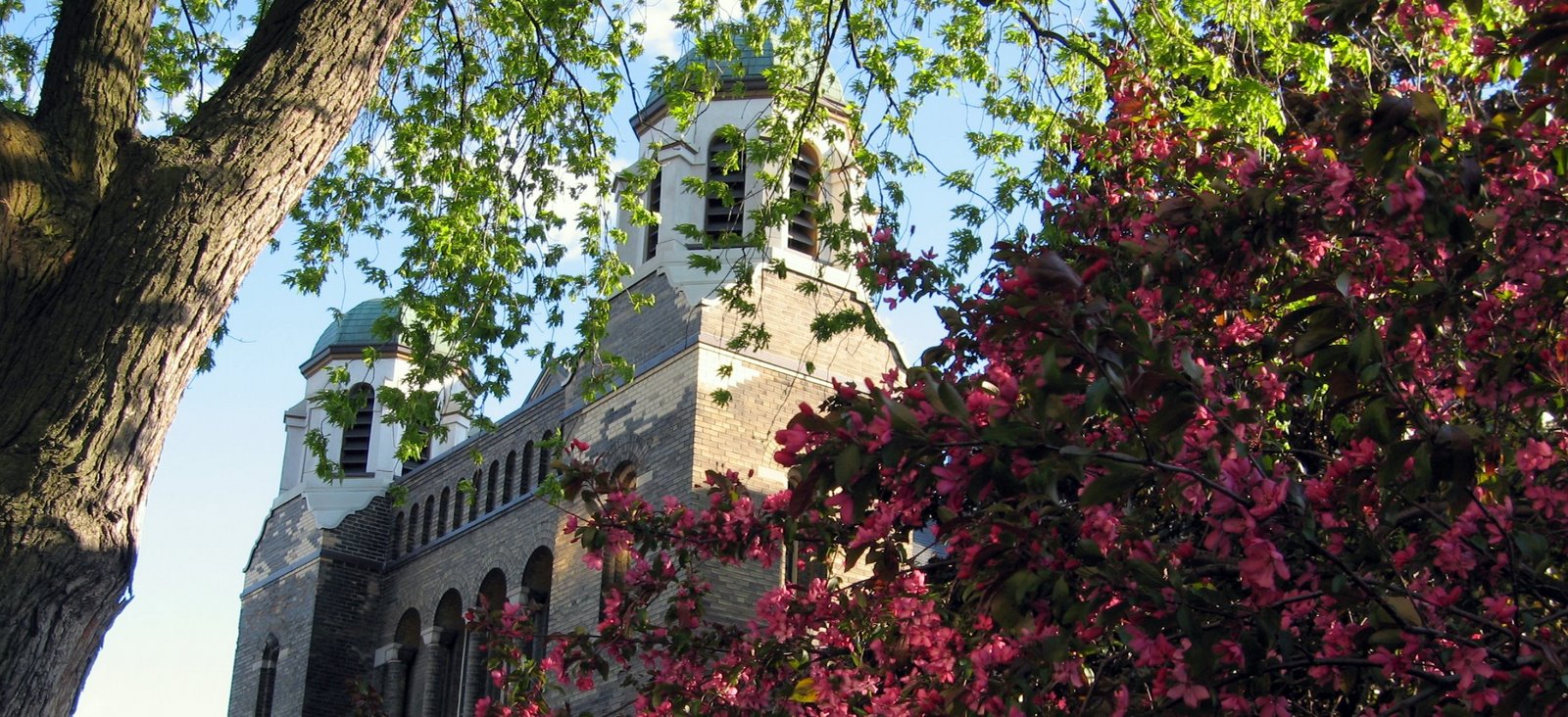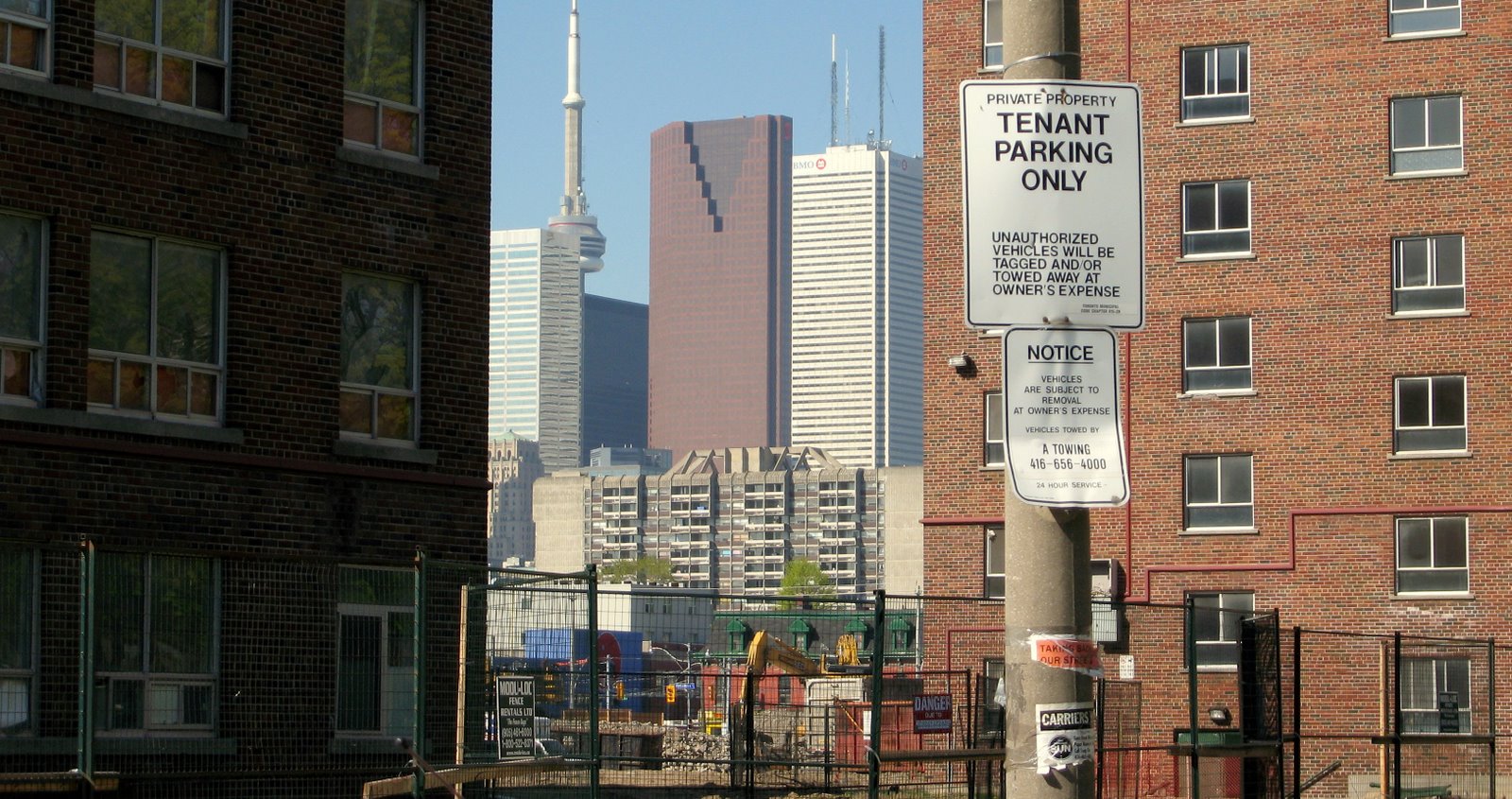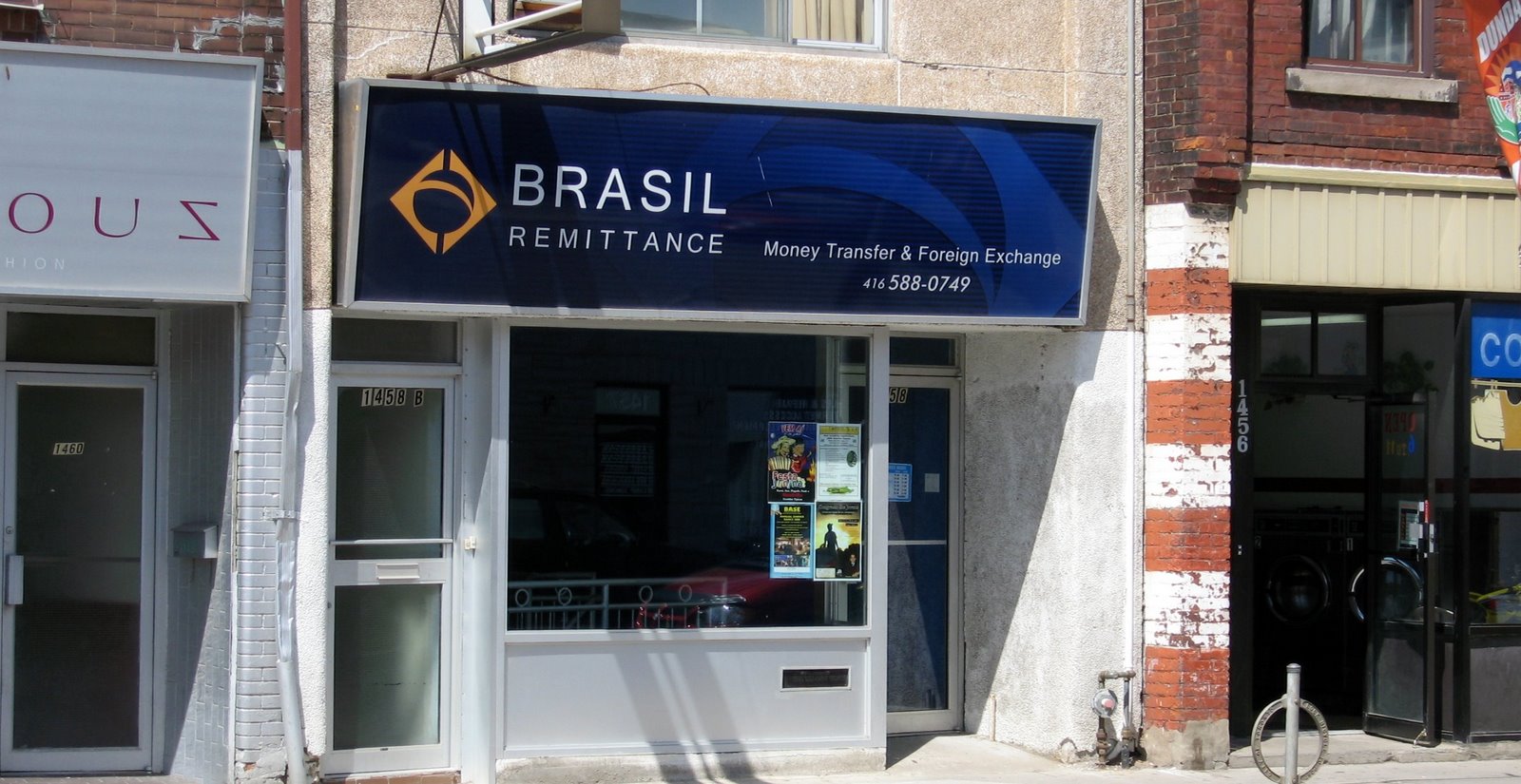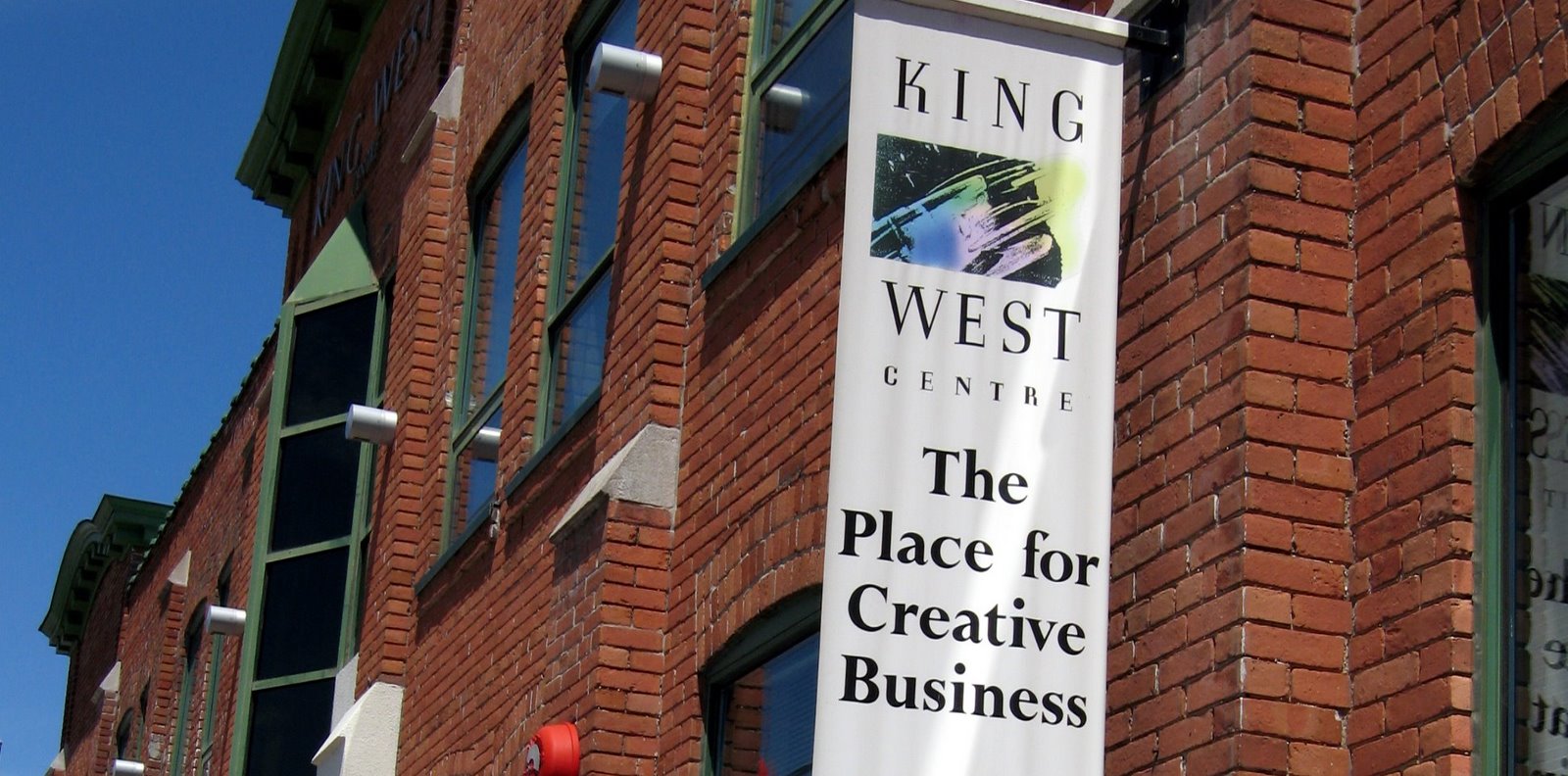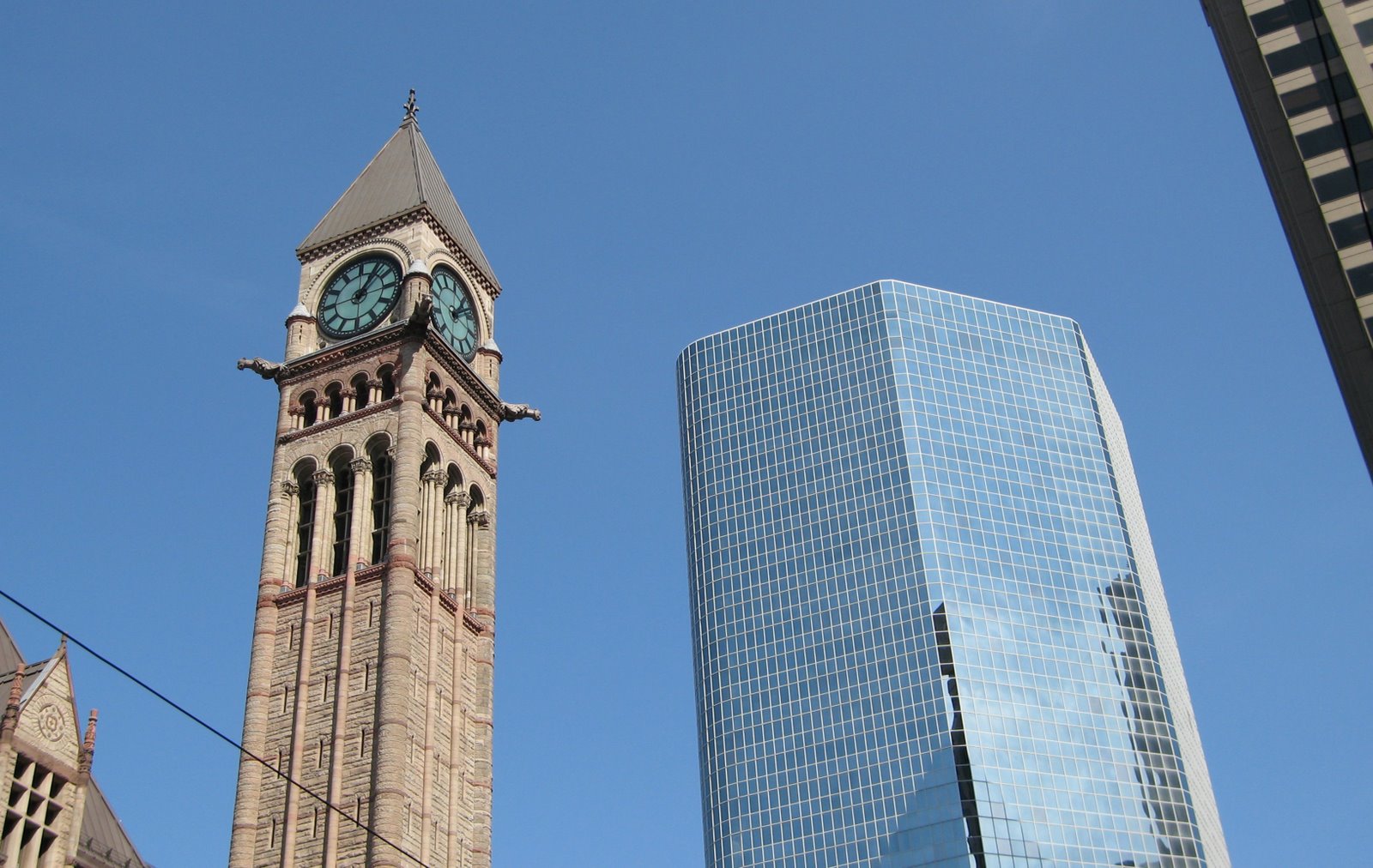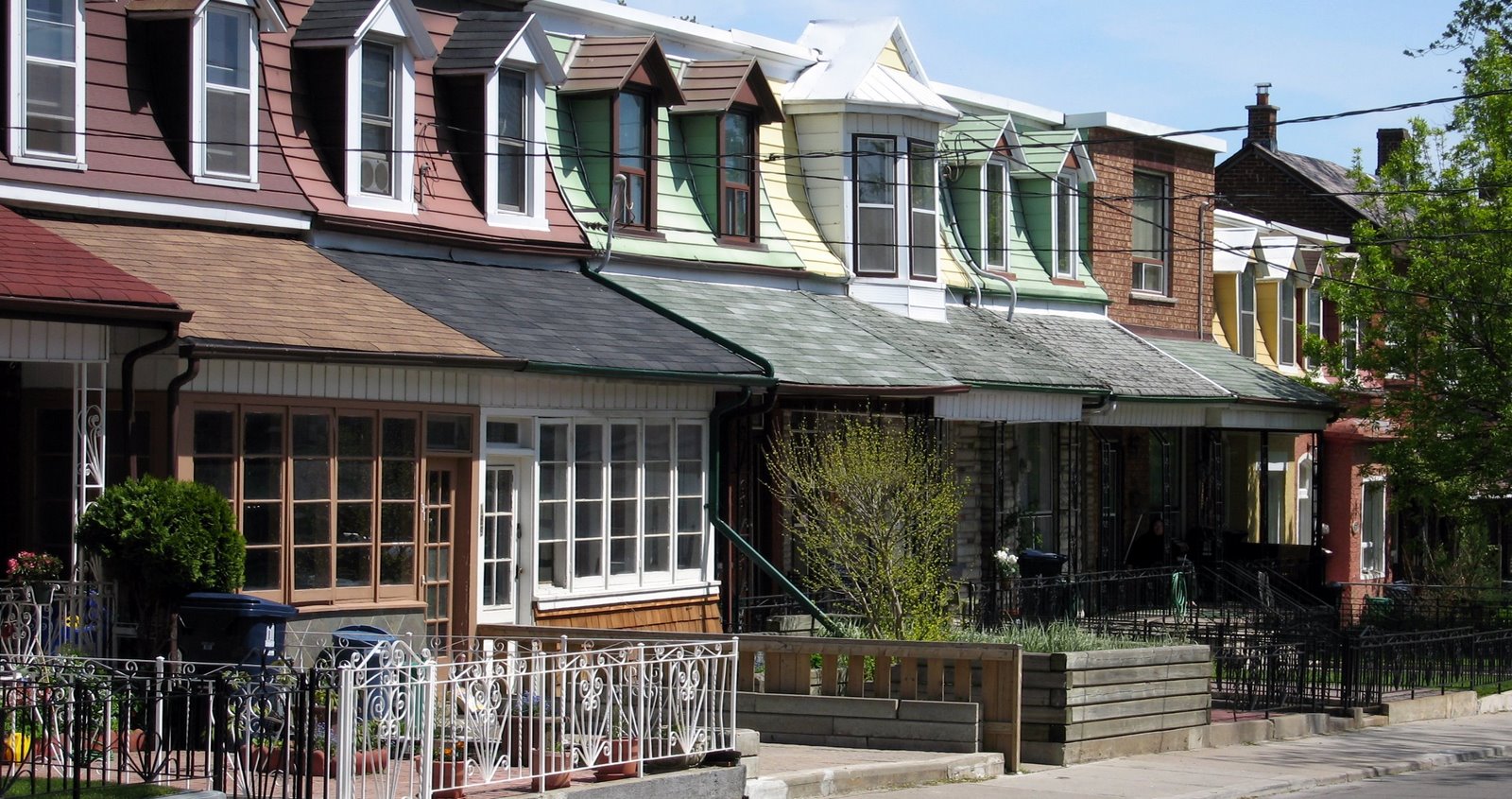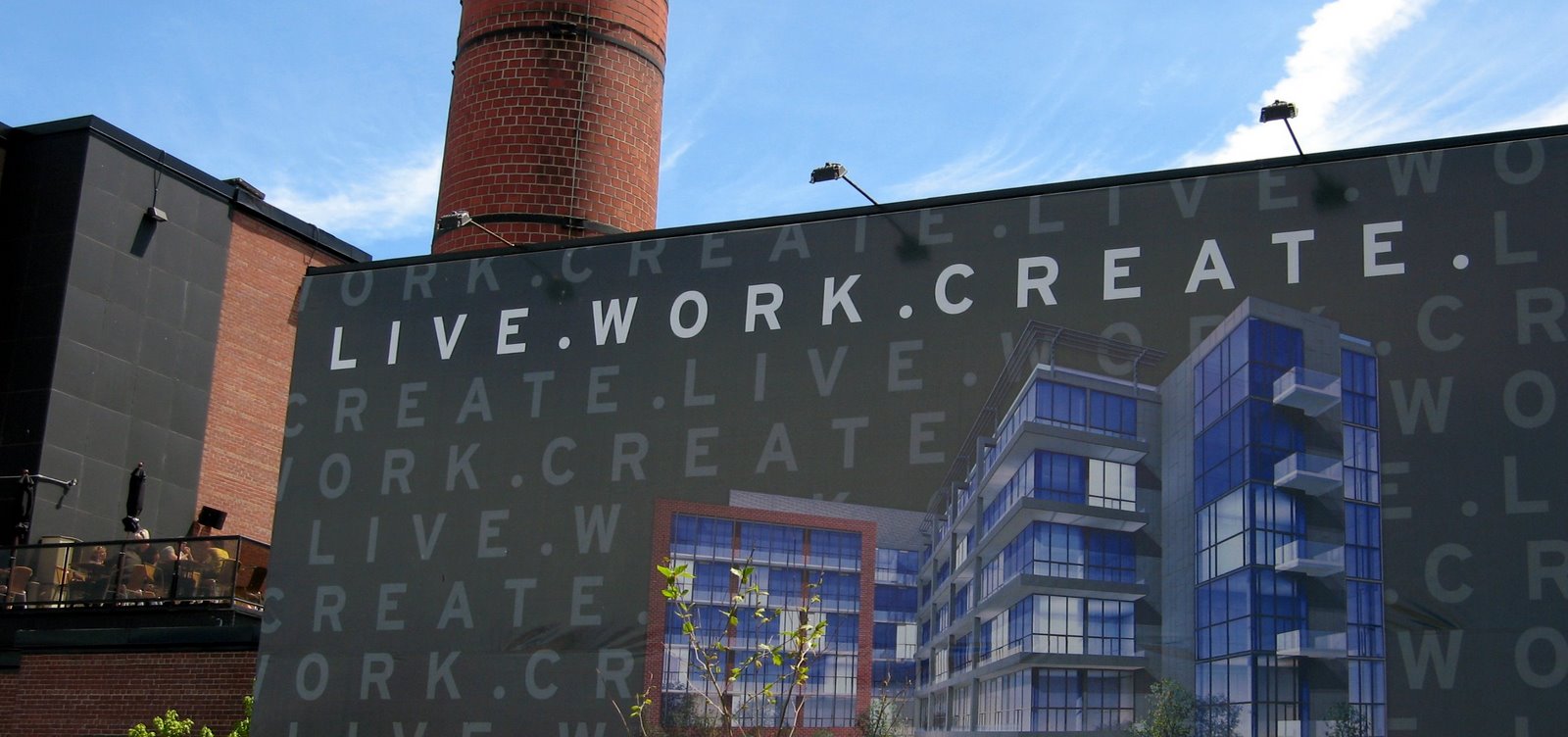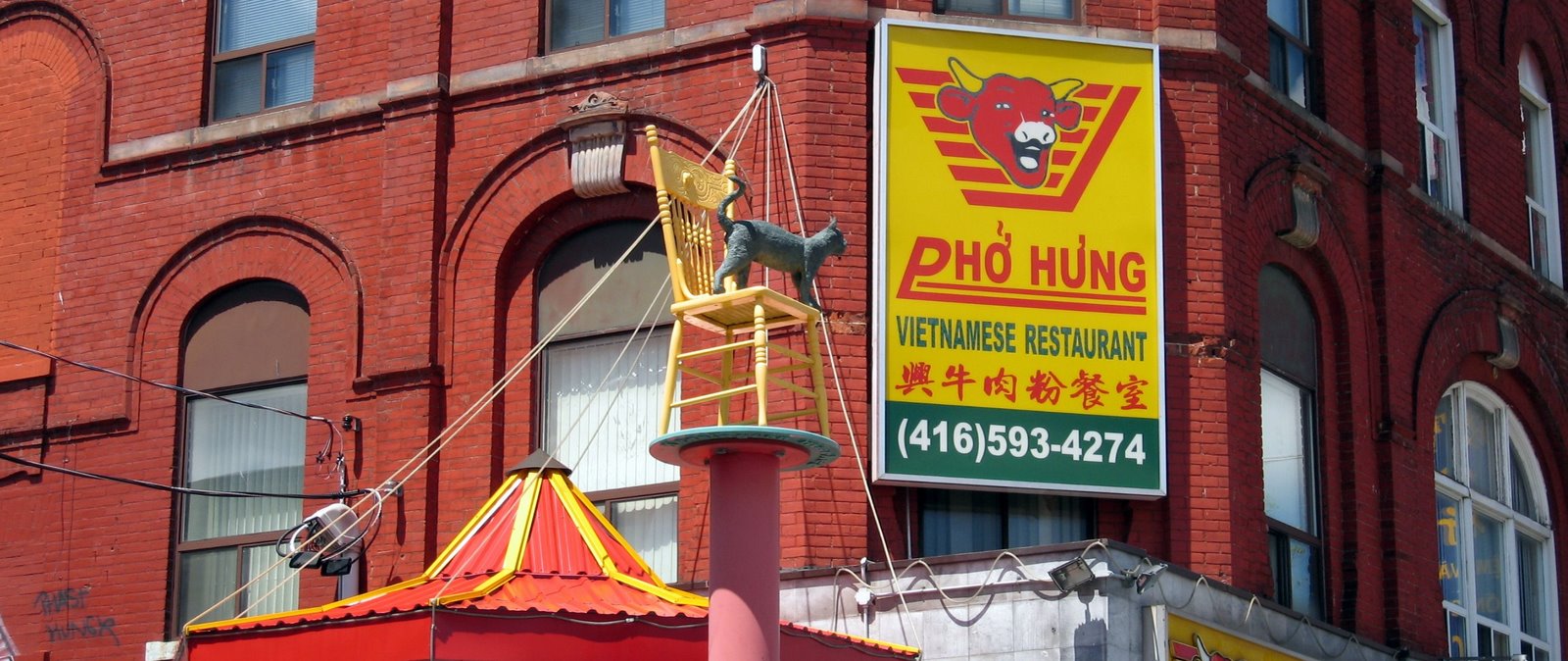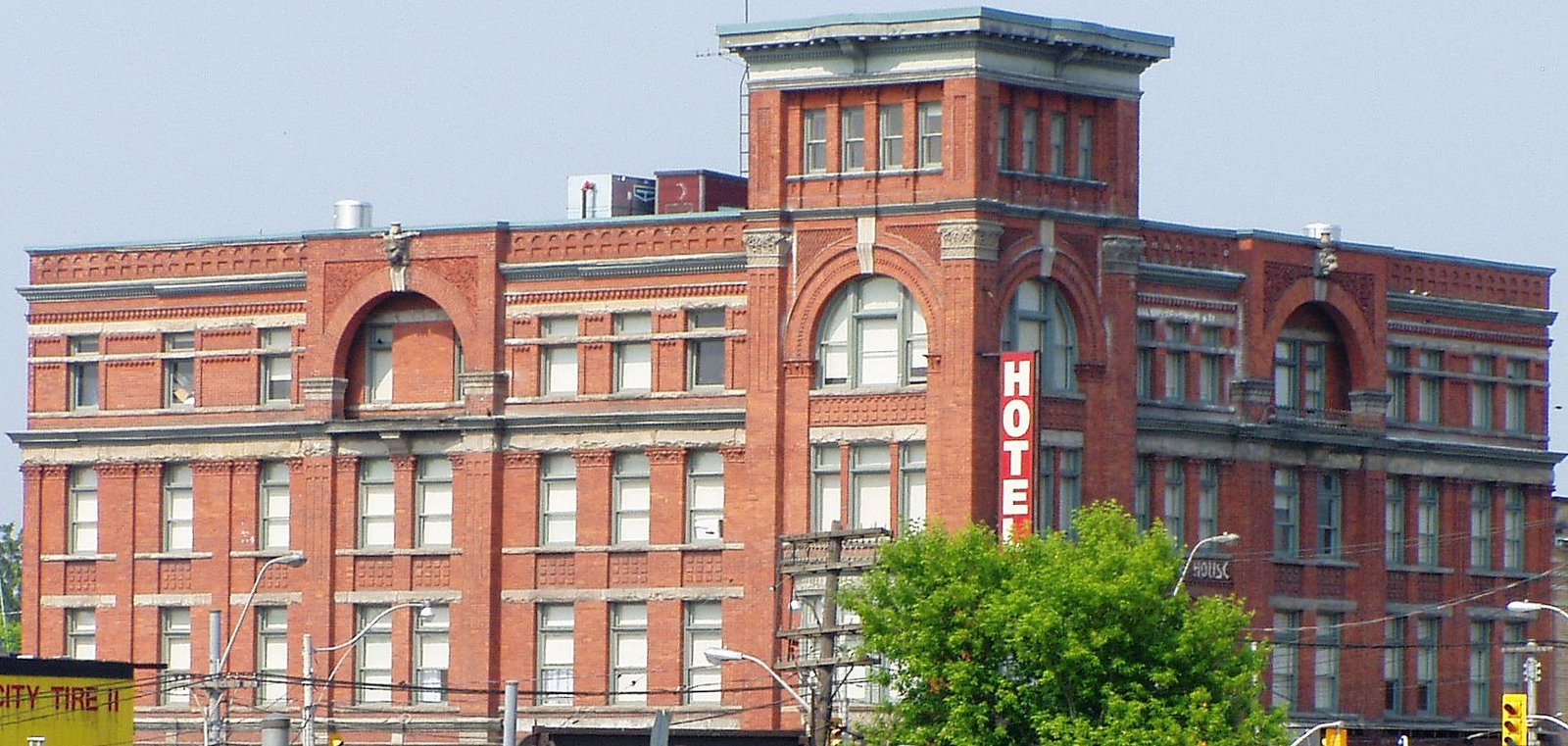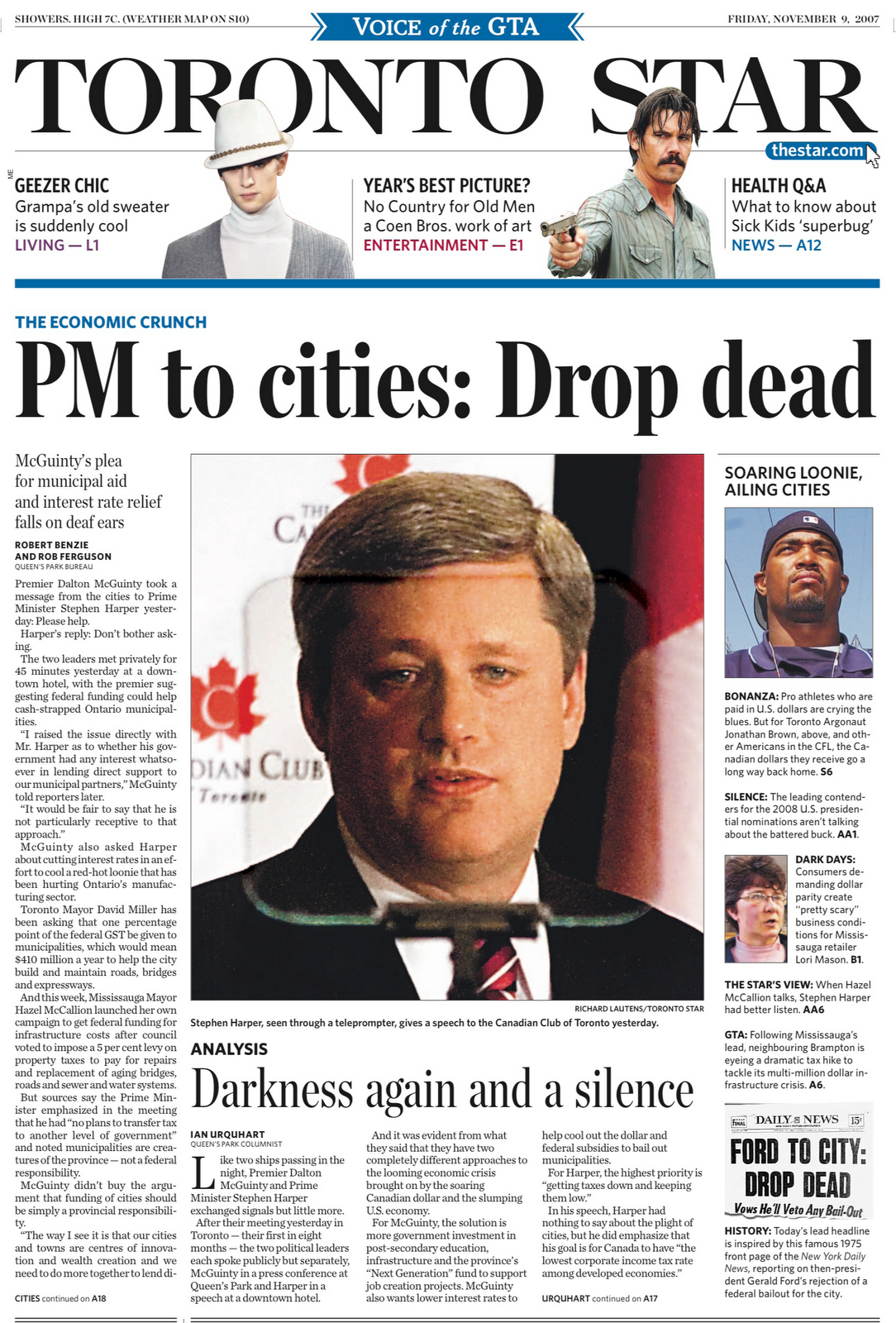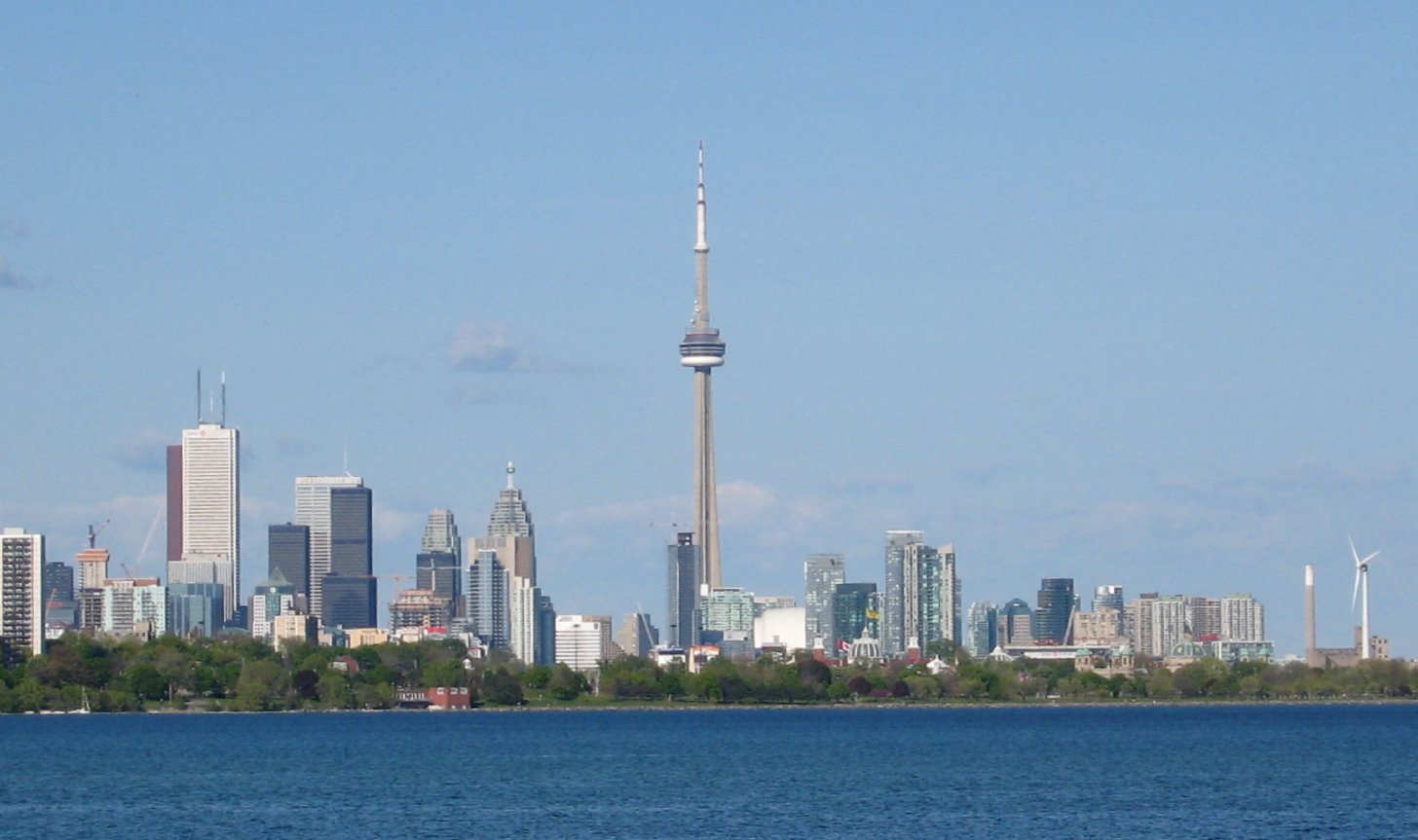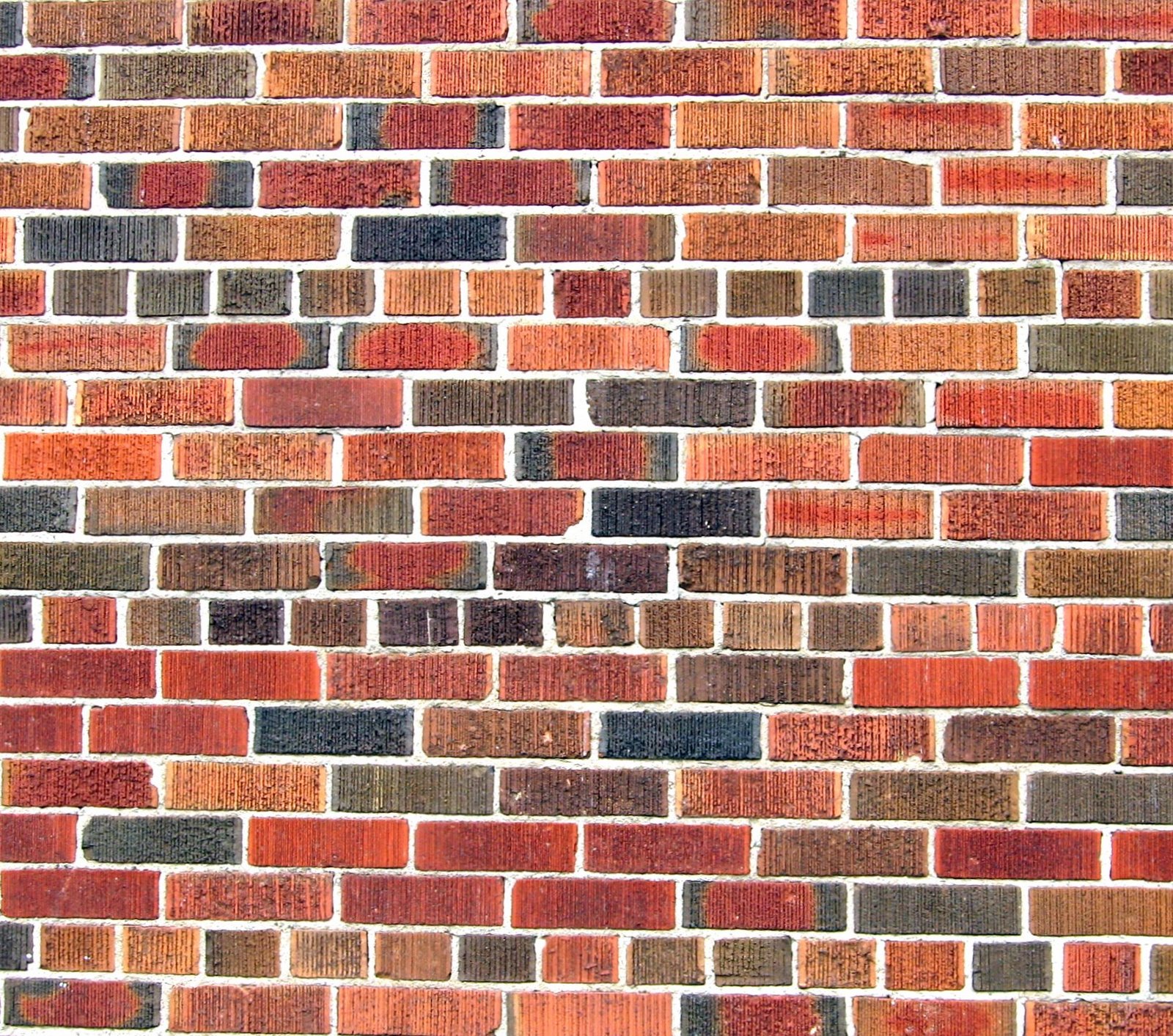The "elephant in the room" during discussions of most any socio-economic and demographic trend relating to Toronto is the growing geographic, ethnocultural, and skin colour (white, non-white) polarization of the city.
Is Toronto creating its own version of ghettos? If so, they will not be American style ghettos. Those arose from U.S. specific historical circumstances and at a different time.
A ghetto, as urban planning professor Peter Marcuse (Columbia University) notes in his studies of divided cities,
“is a spatially concentrated area used to separate and to limit a particular involuntarily defined population group (usually by race) held to be, and treated as, inferior by the dominant society.”A careful definition of ghetto, then, would necessarily include three elements: spatial separation; discrimination; and an involuntary (imposed) definition of identity, usually as racial.
Ghettos must be distinguished from voluntary enclaves. An enclave is a spatially concentrated area in which members of a particular population group, self-defined by ethnicity or religion or otherwise, congregate as a means of enhancing their economic, social, political, religious and/or cultural development.
Enclaves are healthy and normal aspects of urban growth and change. Though they represent concentrations of a particular group, they are voluntary, they are not based on an imposed definition of identity, and they are non-exclusionary (the majority in an area does not discriminate against others). Others can and do chooe to live in the same area.
Toronto Star columnist Royson James helps raise the issue of the potential ghettorization of Toronto is his column (below).
With the recent release of most of the 2006 census data we can begin detailed analysis of Toronto's neighourhoods and reach some conclusions about areas that are voluntary enclaves and areas that may be on their way to becoming ghettos of exclusion.
______________________
Alarms ring in tale of three cities
The Toronto Star by Royson James, urban affairs columnist, 24 May 2008
For many years, urban thinkers have opined about the "hole in the doughnut" – a condition particular to America where the downtowns of major cities are abandoned by the middle class and left to criminal elements, the poor and urban decay.
Except for a central business district and the daytime vibe it brings, the core becomes a wasteland as the middle class, usually white, moves out to the suburbs.
Accompanying this flight is the capital of taxes and school funding, and the repetitive, predictable outcome: abominable inner-city schools, denuded infrastructure, and huge pockets of Third World conditions.
Throughout our history, Toronto's managed to avoid this trend. Waves of ethnic groups moved through working-class neighbourhoods downtown, out to neighbouring boroughs and cities, then to the 905 region. But living in the city was kept viable and attractive thanks to social housing, strong social agencies and a safety net.
There were also good-paying manufacturing jobs close enough to sustain the dream.
The upwardly mobile of the 1950s and 1960s found homes in the new suburbs. Ontario Housing and Metro Housing projects sprang up for low-income folks, with little protest and concern. Senior governments were paying for them, so the individual municipalities shrugged and approved the plan.
While the social housing endures – much of it crying out to be remediated, a la Regent Park – a disturbing trend demands attention. David Hulchanski, director of urban and community studies at the University of Toronto, calls it the "elephant in the room that no one is talking about. Everybody knows it is the lived reality of the city."
Middle-income earners are a dying breed in the city of Toronto as income polarization takes root. Not only are the poor losing ground, so is the middle class.
It's not that they are pulling up stakes and moving out – though some do. Rather, the natural progression from apartment to house in Scarborough or North York is no longer the norm.
Newcomers can't afford the move because their incomes have stagnated or regressed. Those who can afford it and want a suburban lifestyle are choosing the 905 region and beyond instead of the inner suburbs.
As the old guard of middle-class suburban residents dies off, they are being replaced by residents who have little or no economic choice as to where they live.
One Hulchanski study shows Toronto has become three cities. City One has residents who are wealthy, live close to the subway lines and have watched their income rise by 20 per cent or more in real terms between 1970 and 2000. They occupy 20 per cent of the city.
City Two has seen little change and represents 43 per cent of the city's neighbourhoods.
City Three comprises 36 per cent of the city. Residents here have seen incomes decrease over the last 30 years. Where are these? Primarily in the inner suburbs, north of the 401, away from the subway.
Not surprisingly, City One is predominantly white; City Three is predominantly non-white.
South of the border, wherever there are concentrations of non-whites under economic distress, there is a term for it: ghetto.
We haven't had to use that term in Toronto the Good. Somebody ought to be obsessed with this issue so we never need to use it.
Email: rjames@thestar.ca
